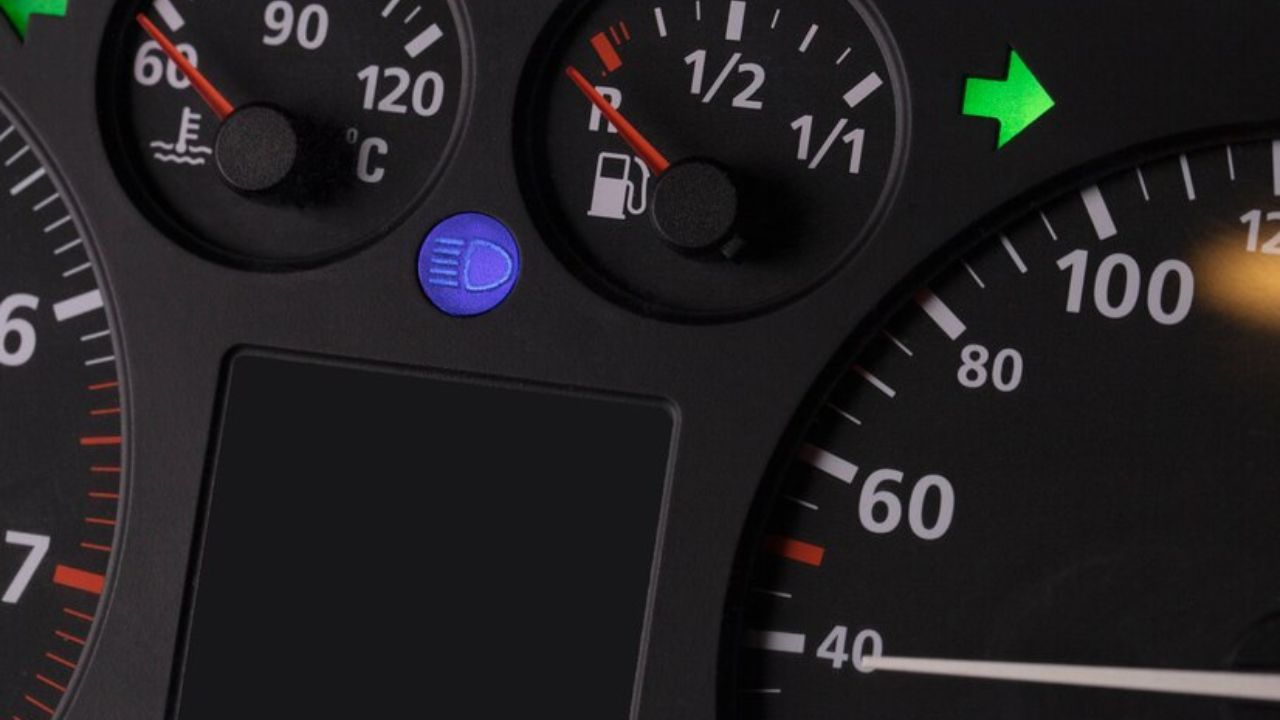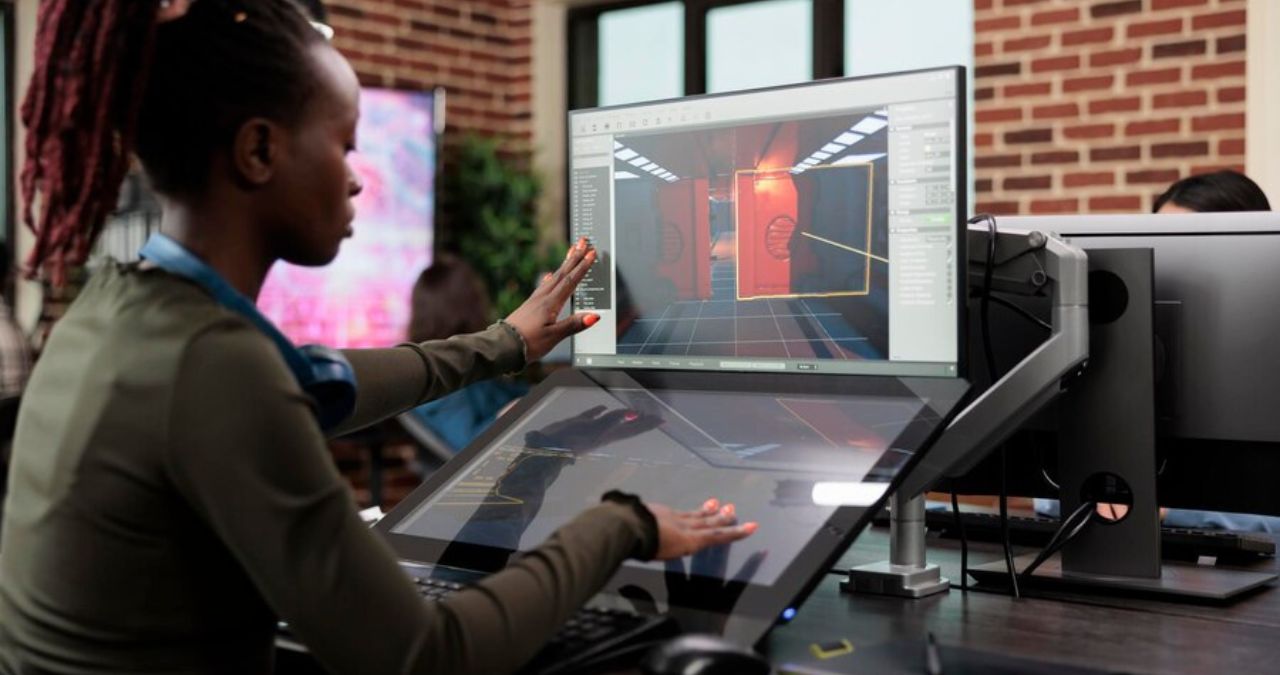TECH
The Ultimate Guide to Understanding the Baimoqi Car Digital Clock Manual PDF

Your car is more than just a vehicle; it’s your trusted travel companion, your quiet retreat on busy days, or even your mobile concert hall. And somewhere in this space of comfort and utility sits the digital clock—a small yet essential element ensuring you stay on track and on time. Enter the Baimoqi Car Digital Clock Manual PDF, a sleek timepiece offering more than just hours and minutes. But if you’ve recently come across its manual, you might feel a little overwhelmed.
Fear not—this guide is here to demystify the Baimoqi Car Digital Clock Manual PDF, making its instructions as simple to follow as your favorite playlist. Whether you’re programming the settings, syncing it with your routine, or troubleshooting, this guide will have you mastering your digital clock in no time.
Why the Baimoqi Car Digital Clock Manual PDF Stands Out
Before we get to the manual itself, let’s take a moment to appreciate what makes the Baimoqi Digital Clock extraordinary.
Compact Yet Functional
Imagine a clock that doesn’t impose but integrates seamlessly into your car’s interior. The Baimoqi clock, with its minimalist design, complements almost every car’s aesthetic. Its user-friendly interface ensures you can glance at the time without distraction.
Multi-Functionality
Beyond just a digital timestamp, the Baimoqi clock often includes features like temperature display, ambient lighting, or even a stopwatch function. With these elements, it becomes more than just a clock—it’s a mini control center keeping you informed at a glance.
Effortless Integration
Unlike some digital clocks that feel misaligned with automotive needs, the Baimoqi clock is purpose-built for vehicles. Designed with shock resistance, glare-reducing displays, and easy mounting, it adapts to car environments effortlessly.
Now, with that excitement in mind, let’s unravel the details of the manual!
What’s Inside the Baimoqi Car Digital Clock Manual PDF
Opening the manual might feel like discovering a new tech landscape, but it’s all more intuitive than it seems. Here’s a breakdown of its structure and key sections, brought to life with clarity.
1. Getting Started
When you first open the PDF, you’ll find the basic setup instructions. Here, the manual gently guides you through unboxing the device, identifying its components, and ensuring everything is ready for installation. It conveys tips like examining the included adhesive strips, aligning the clock for visibility on your dashboard, and securing it firmly.
Pro Tip:
Test the placement of the clock before sticking it permanently. Adjust the angle to minimize glare during both sunny and nighttime conditions.
2. Time and Date Settings
Arguably the most vital section, this part ensures your clock tells the right time. It breaks down step-by-step instructions, often accompanied by diagrams for visual learners.
Here’s an example of how this might look simplified for you:
- Step 1: Press and hold the “Set” button to enter setup mode.
- Step 2: Use the “+” or “-” buttons to adjust the current hour.
- Step 3: Press “Set” again to adjust minutes, and repeat for the date if available.
The manual explains this process methodically, but remember—it’s OK to refer back until it feels natural.
3. Extra Features
Have you noticed extra icons on the display? This section of the manual introduces features like temperature measurement or timers. For instance:
- Temperature Display: Learn how to toggle between Celsius and Fahrenheit modes.
- Stopwatch/Timer: Ideal for timing stops on long road trips or parking meter monitoring.
The manual also provides tips to optimize these features, ensuring they enrich your driving experience.
4. Troubleshooting
Even the most advanced devices occasionally need a nudge. The troubleshooting section anticipates common scenarios—like dim screens, incorrect time settings, or buttons not responding—and offers clear solutions. Some advice might include checking the battery compartment or resetting the device (don’t worry, no technical skill required!).
5. Care and Maintenance
Your car clock deserves love too! The manual explains how to keep your Baimoqi clock pristine and functioning for years. Simple practices like cleaning the display gently with a soft cloth or replacing the batteries promptly make all the difference.
Why the Manual Matters
You might be tempted to skip the instructions and figure things out as you go, but here’s why the manual is worth your time.
- Unlock All Features: The Baimoqi clock delivers much more than the time, but you might miss out on extra functions without reading the manual.
- Save Time & Effort: Instead of fumbling with trial and error, the manual provides precise directions for every function.
- Maximize Product Lifespan: Maintenance recommendations ensure your clock performs flawlessly for years.
Tips for Navigating the PDF Format
Digital manuals bring their own conveniences. Here are a few ways to make the most of the PDF version of the Baimoqi clock manual.
- Use the Search Function: Many PDFs allow you to search keywords like “time,” “temperature,” or “reset” for instant answers.
- Bookmark Key Sections: Keep pages you’ll revisit—like troubleshooting or feature explanations—easily accessible with the bookmark tool in your PDF reader.
- Print If Necessary: If you’re a fan of the old-school, tactile approach, print the manual and keep it in your car for quick reference.
How Baimoqi Connects You to Your Driving Experience
At a glance, a clock might seem so small—yet it’s integral to how we experience time, manage our schedules, and stay efficient. With every feature the Baimoqi digital clock offers, it invites you to elevate that experience.
Picture this as you drive—a quick glance at its clear display shows you’re on time for your next meeting, while the temperature display informs you whether it’s a windows-down afternoon or a heater-on morning. Everything about the Baimoqi clock is designed to make your rides smoother and more delightful.
Make the Most of It
By now, you should feel confident navigating the Baimoqi Car Digital Clock Manual PDF and its features! Take your time experimenting with settings, customizing displays, and familiarizing yourself with functions that resonate with your needs.
Remember, this isn’t just any clock—it’s a reflection of modern design that blends functionality and beauty seamlessly into your most trusted space.
Something Not Covered?
Feel free to reach out to the support team at Baimoqi or connect with fellow enthusiasts online. There are always communities and forums offering tips, hacks, or fresh ways to enjoy your products even further.
TECH
The Future of Operational Technology: Safeguarding Industry

Key Takeaways
- Operational Technology is vital for controlling and automating industrial processes.
- Industries face increasing security threats, necessitating robust protective measures.
- Integrated IT and OT management are critical for future operational success.
As industries across the globe continue to embrace technological advancements, understanding what is operational technology becomes increasingly crucial. Operational Technology (OT) is the backbone of modern industrial processes, effectively managing, controlling, and monitoring industry equipment and systems. However, as these technologies proliferate, so do the challenges and risks associated with safeguarding them. The confluence of rapid digital transformation, interconnectedness, and mounting cybersecurity threats places OT security at the forefront of economic and safety concerns. Protecting these vital systems is not just a technical necessity but a pivotal aspect of maintaining uninterrupted industrial operations and public safety.
Operational technology security is increasingly becoming a pivotal concern for enterprises. In a world where automation and data-driven decision-making dominate operational processes, ensuring OT security is no longer optional; it is essential for protecting vital infrastructure and maintaining public safety. As industries become more digitally linked, vulnerabilities previously isolated are now interconnected, introducing new vectors for potential threats. Here, we delve into the future of OT, investigating the key transformations and protective measures that industries must adopt to ensure secure and seamless operations.
Introduction to Operational Technology
Traditionally, operational technology systems function independently from information technology systems. They facilitate the management of physical devices, which are crucial in the manufacturing, energy, and transportation industries. However, the advancement of digital technologies is driving these spheres to converge. Consequently, understanding the landscape of OT and its implications is paramount for today’s industrial leaders. By unifying systems that were once disparate, there is an opportunity to achieve unprecedented efficiencies and insights. This transformation demands a shift in how systems are secured and managed, moving towards an integrated approach that accounts for operational and informational elements.
Transformations Shaping OT
The landscape of OT is continuously evolving due to several technological transformations, each bringing unique benefits and challenges:
- Digital Transformation: Integrating the Internet of Things (IoT) within OT networks enables precise data collection and analysis, improving efficiency and productivity. Advanced data analytics allows industries to monitor processes in real time, providing invaluable predictive insights for reducing downtime and optimizing performance. However, the complexity and potential entry points for security breaches increase with more devices connected.
- Automation and AI: Automation redefines industrial operations, ushering in an era of more autonomous systems that optimize processes without human intervention. Artificial Intelligence (AI) enhances these systems’ capacity to learn and adapt, leading to more efficient operations. While automation reduces human error and operational costs, it requires robust security frameworks to prevent unauthorized access and manipulation.
- Cloud Computing: Industries leverage cloud solutions to enhance data storage and processing capabilities, offering scalability and flexibility. Cloud-based OT solutions provide a centralized data analysis and operations management platform, yet they also pose risks associated with data sovereignty and cybersecurity. Finding a balance between cloud benefits and security concerns remains a critical task.
For further reading on how industries adapt to these changes, you can explore operational technology management solutions, which discuss how sectors adjust their strategies to harness these advancements while mitigating risks.
Emerging Threats and Security Measures
With advancements in technology comes an increase in cyber threats. Hackers target industrial systems, seeking to disrupt operations or steal sensitive data. Industries must implement robust security measures to mitigate these risks. These threats are not just external; internal vulnerabilities such as outdated software and lack of training also pose significant risks. Adequate security must, therefore, be multi-faceted:
- Vulnerability Assessments: Regular analysis of systems to identify and address potential weak points. Proactively managing vulnerabilities through consistent assessments allows organizations to fix issues before they can be exploited, reducing the likelihood of breaches.
- Network Segmentation: Dividing the network into segments to prevent unauthorized access and contain breaches. By segmenting networks, enterprises can limit the spread of any intrusion, effectively isolating it and minimizing its impact.
- Incident Response Planning: Developing a proactive plan to respond effectively to breaches and cybersecurity incidents. A robust incident response capability ensures that organizations can quickly recover and learn from security incidents, reducing their impact and preventing future occurrences.
Importance of Integrating IT and OT
As the lines blur between IT and OT, their integration becomes crucial for seamless management and enhanced security. A unified strategy provides comprehensive oversight and enables the application of consistent security protocols across all domains. This convergence allows for several industry-changing benefits:
- Comprehensive Threat Detection: A unified approach to monitor and detect threats across IT and OT domains ensures consistent vigilance and a rapid response capability.
- Improved Operational Efficiency: Sharing and analyzing data across systems provides an opportunity for better decision-making and enhanced operational efficiency. By integrating IT and OT systems, enterprises can leverage data-driven insights to streamline processes and improve productivity.
- Cost-effective Solutions: Streamlined operations reduce redundancies and operational costs, enabling industries to focus resources more effectively and improve their bottom lines. Integration also reduces complexity in system management, easing the burden on IT departments.
Future Trends in Operational Technology
Looking ahead, several trends promise to redefine the future of OT. Each trend represents an opportunity for evolution but also demands careful consideration to ensure that advancements do not outpace the ability to secure and regulate them effectively:
- Increased Use of Robotics: Robotics will become integral in managing complex tasks, reducing human error, and enhancing safety. As robotics technology advances, it will take on more sophisticated roles in industries, necessitating robust security measures to ensure their safe operation.
- Enhanced Cybersecurity Frameworks: Advanced security measures, such as AI-based threat detection, will become standard as industries seek to stay ahead of increasingly sophisticated cyber threats. These frameworks will be vital in protecting sensitive data and maintaining operational continuity.
- Focus on Sustainability: As industries focus on reducing their carbon footprint, energy-efficient OT practices will gain prominence. Sustainable practices will minimize environmental impact, offer cost savings, and improve corporate reputations.
The future of operational technology holds great promise, bringing exciting possibilities for industries worldwide. Ensuring its security and efficiency requires vigilance, adaptation, and continued investment. By embracing these changes and preparing for emerging challenges, industries can safeguard their operations, protect their assets, and drive forward into a connected and secure future.
TECH
Takaya Accelonyxe: Revolutionizing Technology and Design

The Takaya Accelonyxe name is making waves across industries, emerging as a groundbreaking solution in the realm of [specific application/industry context, if applicable]. Whether you’re a precision-driven innovator or a future-oriented business, the capabilities of the Takaya Accelonyxe redefine what’s possible. This blog post delves into the cutting-edge features behind its success, its practical applications, and how it can transform your processes to achieve new milestones of excellence.
What is the Takaya Accelonyxe?
Takaya Accelonyxe is a sophisticated, high-performance system designed to deliver unrivaled accuracy, speed, and adaptability. Engineered with next-generation technology, it represents a major leap forward for professionals requiring [mention specific functions or processes if applicable, like “complex machinery inspections,” “automated testing,” etc.]. Its user-focused design removes common operational inefficiencies while ensuring consistent and error-free results, reducing downtime and increasing productivity.
What sets the Takaya Accelonyxe apart from most other systems is its ability to blend state-of-the-art hardware with advanced software algorithms. This seamless integration ensures unparalleled reliability, making it an invaluable asset for businesses seeking to stay ahead of the curve.
Key Features of the Takaya Accelonyxe
1. Precision Beyond Limits
At the core of Takaya Accelonyxe lies an acute focus on precision. Powered by cutting-edge calibration tools, Accelonyxe ensures the smallest details are captured with meticulous accuracy. For industries where even the slightest deviation can lead to critical errors, the system safeguards operational integrity like no other.
- Accurate Results Every Time
Leveraging advanced algorithms, Accelonyxe minimizes false positives or negatives, ensuring reliability.
- High-Resolution Capabilities
Its powerful resolution mechanisms allow it to function seamlessly, even in challenging environments or conditions.
2. Unmatched Speed and Efficiency
In a fast-moving world, time is a critical commodity—and Takaya Accelonyxe understands this. With its next-gen processing capabilities, it delivers unparalleled speed while maintaining the highest accuracy levels.
- Rapid Process Cycle
Complex tasks that previously took hours are now executed within minutes.
- Optimized Workflow
By employing smart analytics and automation, it eliminates repetitive manual tasks, freeing your workforce to focus on innovation.
3. Adaptable and Scalable
One size does not fit all. The Takaya Accelonyxe is built with adaptability and scalability in mind, enabling it to fit seamlessly into various business operations regardless of industry scope.
- Customizable Configurations
Tailor system parameters to match specific requirements without compromising efficiency.
- Multi-industry Integration
Accelonyxe easily integrates into industries like electronics, healthcare, aerospace, and more.
4. Intuitive User Experience
Designed for the modern workforce, Takaya Accelonyxe ensures that technological complexity doesn’t hinder usability. Its interface is engineered to simplify even the most intricate processes.
- User-Friendly Interface
A seamless dashboard grants users full control over system operations without the need for extensive technical knowledge.
- Enhanced Training Modules
Onboard with confidence using resources tailored to minimize onboarding times.
5. Sustainability and Reliability
Sustainable technologies define the Takaya Accelonyxe. Designed with durability and reduced environmental impact in mind, it’s ideal for organizations committed to eco-friendly practices.
- Energy Efficiency
Optimized power consumption minimizes operational expenses while contributing to sustainability goals.
- Built to Last
Engineered with high-grade materials, ensuring continuous peak performance.
Applications of Takaya Accelonyxe Across Industries
Electronics Manufacturing
With its groundbreaking accuracy, Takaya Accelonyxe transforms the electronics manufacturing process, improving testing protocols for PCBs (Printed Circuit Boards) or detecting minute soldering errors that might otherwise go unnoticed.
Aerospace Testing
Aerospace operations demand unparalleled precision, an area where Accelonyxe thrives—identifying vulnerabilities and ensuring structural rigidness like no other solution.
Medical Device Inspection
For industry leaders producing critical medical instruments, Takaya Accelonyxe reduces the scope for error to virtually zero, enabling compliance with strict healthcare regulations.
Automotive Supply Chains
Takaya Accelonyxe enhances quality assurance in automotive supply chains, empowering manufacturers to gain a competitive edge by delivering impeccable components.
Why Choose Takaya Accelonyxe?
Organizations today face unique challenges, from the need for increased operational efficiency to stricter quality standards. Investing in Takaya Accelonyxe provides:
- A Competitive Advantage: Stay ahead in your industry by leveraging superior accuracy and speed.
- Cost Savings: Improve efficiency while minimizing wasteful operational overheads.
- Future Readiness: Adopt technology that evolves with your company’s needs, preparing you for long-term success.
Best Practices for Leveraging Takaya Accelonyxe
To maximize the value of Takaya Accelonyxe in your organization, consider the following steps:
- Evaluate Organizational Needs
Assess your current systems and define clear goals to identify areas where Accelonyxe can deliver the greatest value.
- Invest in Training
Equip your team with the necessary training modules for seamless integration.
- Monitor Performance Metrics
Leverage analytics to continually track and refine operational improvements.
Drive Your Business Forward with Takaya Accelonyxe
Investing in high-performance technology is no longer optional—it’s a necessity. The Takaya Accelonyxe not only enhances your business efficiencies but also positions your organization as a trailblazer in innovation. Whether you’re operating in electronics, automotive, aerospace, or healthcare, this state-of-the-art system will redefine and elevate your standards.
Don’t just keep up—lead the charge in your industry. Learn how Takaya Accelonyxe can transform your processes and propel your business toward unmatched success.
BLOG
What is WAAA-117? A Complete Guide

At first glance, the term “WAAA-117” may seem like a jumble of characters, but for those in the know, it signifies something extraordinary. This sophisticated amalgamation represents more than just a code; it’s a gateway to an elevated experience, blending innovation, refinement, and exclusivity into one concept.
Whether you’re here to unravel the mystery behind WAAA-117 or seeking to explore what makes it so revered, this guide provides an insider look, delivering all the details you need to fully immerse yourself in its luxurious charm. Prepare to step into an elegant world of possibilities, designed with precision to inspire and captivate.
What Exactly is WAAA-117?
At the heart of WAAA-117 lies a carefully crafted framework aimed at delivering elite infrastructure, performance, and functionality. While its precise applications are tailored to various industries, the one constant is its commitment to sophistication and excellence.
WAAA-117 draws on advanced technology, providing exceptional customization, architectural brilliance, and seamless integration suitable for industries such as aviation, luxury accommodations, or exclusive design fields. Imagine it as the epitome of precision engineering, where elegance meets cutting-edge progress.
For any connoisseur of premium experiences, engaging with WAAA-117 feels akin to unraveling a finely tailored bespoke service—sleek, adaptable, and undeniably luxurious.
Why Does WAAA-117 Matter?
Luxury is often defined not only by how something looks or performs but how it makes you feel. WAAA-117 is designed to elevate experiences through unparalleled attention to detail, delivering benefits such as:
- Sophistication in Innovation: Built on next-generation technologies, it offers seamless operation and futuristic solutions.
- Tailored Customization: Whether adapted to fit aviation interiors, luxury residences, or unique high-end systems, it molds perfectly to meet an individual or organization’s needs.
- Aesthetic Excellence: More than function, WAAA-117 boasts visually breathtaking designs, transforming functional elements into pieces of art.
- Sustainability Focus: Often incorporating eco-conscious materials and practices, WAAA-117 balances indulgence with responsibility.
For industries dependent on delivering premium, bespoke quality, WAAA-117 symbolizes efficiency and artistry, blended harmoniously to surpass expectations.
Key Applications of WAAA-117
While WAAA-117 can serve a myriad of purposes, its influence has predominantly made headlines in specific spheres. Here are some of its most celebrated applications.
1. Aviation
WAAA-117 is a name synonymous with comfort and advanced technology in private and commercial aviation. Whether integrated into the design of lavish jet interiors or used to enhance aerodynamic functionality for aircraft, every detail is crafted to deliver a flying experience like no other. Here are highlights of WAAA-117’s contribution to aviation:
- Luxurious Cabin Comfort: Hand-stitched seat designs and seamlessly integrated cabins make even transcontinental flights feel effortless.
- Cutting-Edge Navigation Enhancements: Pilot-focused features ensure intuitive controls and heightened safety.
- Aerodynamic Sustainability: Its lightweight design helps optimize fuel efficiency and minimize environmental impact.
2. Hospitality
Visiting a luxury hotel equipped with WAAA-117’s functionality is an invitation to immerse in indulgence. Think advanced in-room AI mechanisms, panoramic entertainment systems, and touchless temperature or ambiance adjustments. But WAAA-117’s isn’t limited to technology alone—it’s also found in pristine architectural elements that symbolize grandeur.
Imagine checking into a penthouse suite, where WAAA-117’s expertise ensures flawless transitions between indulgence and sustainability, redefining travel and hospitality standards into a bespoke experience.
3. Architecture & Design
If homes speak to intimate preferences, those designed with WAAA-117 go a step beyond, speaking directly to masterpieces of artistic living. WAAA-117’s has also reengineered interiors of private residences and exclusive venues. Its contributions include seamless surfaces, energy-efficient structural designs, and aesthetic innovations bringing spaces alive. Examples of this are:
- Panoramic glass panels or adaptive mood lighting systems sculpted specifically for elite residences.
- Functional art installations expertly intertwined into everyday living spaces.
- Minimalist yet lavish designs holding eco-sensitive principles yet bold craftsmanship.
Exploring Its Exceptional Features
Elegance Refined
Every item bearing WAAA-117’s stands as a testament to refined luxury designed with an innate understanding of opulent lifestyles. Features span from organic material choices including artisan-crafted woods to multifaceted surfaces merging beauty and longevity.
Seamless Synchronization
Expect seamless connectivity between components, whether software-related or another. Compatible with larger networks, it aligns convenience without interruption.
Eco-Ethical Marvel
Beyond luxury status quo lies forward-thinking eco-practices encapsulated harmoniously blending elegance sustainability proving world-class.
Tailored Craftsmanship Exclusive Signature
No matter Industry commitment excellence hallmark within intertwining custom sophisticated compositions providing hallmark services innovation AI grounding guest-focused ecosystem unparalleled tailor ultimate luxurious facts equivalent renaissance nevertheless perpetual refined.
-

 BLOG10 months ago
BLOG10 months agoTacompton files: A Chronicle of Satire, Community
-

 TECH11 months ago
TECH11 months agoBunkr Album: An Ultimate Guide an Everything You Need to Know
-

 TECH11 months ago
TECH11 months agoSai Manimanoj Intellisoft Technologies: A Deep Dive
-

 FASHION11 months ago
FASHION11 months agoColor Lecrino: A Warm and Versatile Hue for Modern Design
-

 NEWS11 months ago
NEWS11 months agoWoodlake Condominiums News: Latest Updates You Need to Know
-

 BLOG11 months ago
BLOG11 months agoManuela Escobar: The Private Life of Pablo Escobar’s Daughter
-

 NEWS12 months ago
NEWS12 months agoDorsten Vs Fresno Pollution Coparament: Complete Guide
-

 NEWS11 months ago
NEWS11 months agoShari Ann Chinnis Indianapolis: Understanding the Viral TikTok Story
